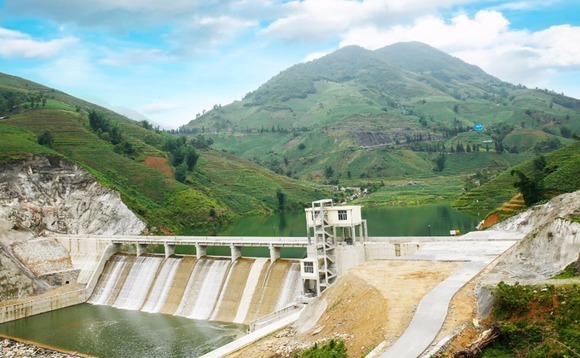
Southeast Asia cleantech: Joining the crowd

Despite growing investment opportunities, LPs are still skeptical about renewable energy in Southeast Asia. Development and operating platforms may be the way to break the stalemate
For Andrew Affleck, founder and managing partner at Armstrong Asset Management, the opportunities for investing in Southeast Asian renewable energy have never been clearer – but private equity has yet to capitalize on them. "I'd be surprised if PE funds account for more than 15% of the money that's going into renewables in Southeast Asia," Affleck told the Infrastructure Investors Forum Asia. "It's largely corporates and industrials, who have more flexibility in the way they can approach it."
Affleck and other industry professionals attribute much of the shortfall a reluctance on the part of LPs to commit to funds focusing on the sector due to its perceived risk. Without support from institutional investors, GPs cannot justify giving renewable energy the same attention they devote to areas like consumer technology that are considered more reliable.
However, many also still see potential for private equity in renewables. Though GPs may have to get used to acting as partners in larger platforms rather than taking all the risk and reward for themselves, this step will likely prove tolerable to investors seeking to prove the viability of the sector.
"It's a way of dealing with risk – partnering with groups that have deep technical expertise, deep regional or domestic expertise, and then putting that money to work, rather than having 1,000 Macquarie people running around the place seeking to be developers in multiple markets," says John Walker, a vice chairman at Macquarie Capital Asia, on the firm's view of renewable energy platforms. "The arms and legs of the development activity take place through those platforms."
Power play
Walker considers Asia Power Development, a joint venture between Macquarie and German power developer Steag, an archetype for the firm's platforms. The JV, founded last year, aims to manage energy projects in Indonesia, Malaysia, the Philippines, and Thailand through every phase of development and operation. All energy sources, including renewables, will be explored, with Macquarie providing capital and Steag the industry expertise.
While Asia Power Development involves a corporate partner, Macquarie is open to working with private equity funds in its platforms as well – as in the case of the Tigris Water Investment Development Platform, a Southeast Asia-focused water projects developer launched by Macquarie and Singapore-based Odyssey Capital. What matters is the partner's ability to provide the required knowledge and proficiency in the region and the sector.
Macquarie is joined in this assessment by other LPs – such as US government-backed development finance institution (DFI) Overseas Private Investment Corporation (OPIC) – who say they also see platforms and partnerships, including with PE funds, as the way forward, as opposed to investing in individual projects.
"Platforms are the ones that win, because they bring you the depth of expertise and resources to execute on the ground," says Geoffrey Tan, a managing director for Asia Pacific at OPIC. "You really need a depth of knowledge with respect to each market you're contemplating that you won't get sitting in New York or London."
On-the-ground experience and execution skills are especially important in Southeast Asia, where cultural and political factors that complicate renewable energy in any market are multiplied across the politically fragmented landscape. Regional investors can help spread risk, but must also be equipped to respond quickly to developments in each country.
In one recent case, Singapore-based Infraco Asia Development learned that the government of Vietnam was proposing to reduce the feed-in tariffs for small renewable energy projects. Though minor, the change would be devastating for a hydroelectric project it was developing.
"We quickly went back to our financial model and came to the conclusion that it basically killed the economics of that particular project," says Allard Nooy, CEO of Infraco. "Our role in life is to create an asset and attract private sector capital, and it needs to be commercially viable, because otherwise we don't have a route to exit."
Infraco responded by mobilizing opposition to the proposed change through several channels. First, it brought domestic developers of small renewable energy projects to meet with Vietnam's energy regulator and trade ministry. For help conveying the needs of foreign investors, the firm contacted the governments of Switzerland and Australia, both of which had sponsored its fund, to reach out through their ambassadors. The efforts were successful, and the regulator invited Infraco and other private sector developers for input on the proposal.
Low on talent
However, this type of execution talent is still relatively unusual in the private equity arena. It is one of the main reasons why institutional investors still report skepticism about the suitability of the PE toolbox to handle the challenges of the sector.
"If you compare infrastructure and renewable energy in particular to other areas that our private equity program is active in, we've had very limited success," says OPIC's Tan. "And I think it all boils down to the fact that it's very rare for fund managers to have the resources set up to actually do all this labor-intensive work."
DFIs like OPIC and the International Finance Corporation (IFC) will likely remain a part of the LP landscape in renewable energy due to their mandate to support development, and a business model that assumes in part that their participation will attract other institutional investors. But GPs hoping to attract a wider range of backers will probably face difficulty without partners that can reassure potential investors.
"A platform could be a fund as well," Macquarie's Walker acknowledges. "But I would have to say the trend for is very much away from funds, and more into operating companies and development platforms."
Latest News
Asian GPs slow implementation of ESG policies - survey
Asia-based private equity firms are assigning more dedicated resources to environment, social, and governance (ESG) programmes, but policy changes have slowed in the past 12 months, in part due to concerns raised internally and by LPs, according to a...
Singapore fintech start-up LXA gets $10m seed round
New Enterprise Associates (NEA) has led a USD 10m seed round for Singapore’s LXA, a financial technology start-up launched by a former Asia senior executive at The Blackstone Group.
India's InCred announces $60m round, claims unicorn status
Indian non-bank lender InCred Financial Services said it has received INR 5bn (USD 60m) at a valuation of at least USD 1bn from unnamed investors including “a global private equity fund.”
Insight leads $50m round for Australia's Roller
Insight Partners has led a USD 50m round for Australia’s Roller, a venue management software provider specializing in family fun parks.







